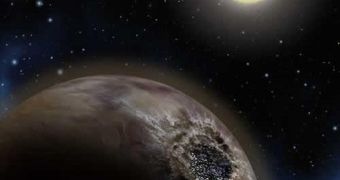Diamonds are known to form on Earth under very specific conditions, like exposure of carbon-bearing materials to high pressure, ranging approximately between 45 and 60 times normal atmospheric pressure, conditions that can be found in the lithospheric mantle below relatively stable continental plates and at the site of a meteorite impact.
Some scientists proposed that the right conditions could also be found on other planets, like Uranus and Neptune, but a new study of the pressure temperature and carbon content in computer simulations reveals that there is no chance that these two planets could form diamonds under the surface.
Luca Ghiringhelli of the University of Amsterdam in The Netherlands led a team that studied the simulations and came to a drastic conclusion: the formation process would actually take longer than the entire age of the Universe.
This conclusion is based on current knowledge about the above-mentioned parameters as they are found on the two planets, which indicate that the crystallization rate required by the transformation of carbon into diamond on Uranus and Neptune is too slow, due to the fact that the planets are estimated to contain only around 1 to 2% carbon.
"It's very unlikely that diamond would have formed in Uranus and Neptune," explains study co-author Daan Frenkel of the FOM Institute for Atomic and Molecular Physics in Amsterdam. "As far as we can judge from these calculations, it's simply not possible."
At least 15% carbon is required to form planets, but so far, no planet containing a concentration this high was ever discovered. However, this does not completely exclude the possibility, since scientists know diamonds can form in other places in space, too, besides the Earth.
For example, the biggest diamond in the galaxy is the entire crystallized core of a dwarf star, 2,500 miles across, that weighs 5 million trillion trillion pounds, which translates to approximately 10 billion trillion trillion carats, or a one followed by 34 zeros.

 14 DAY TRIAL //
14 DAY TRIAL //